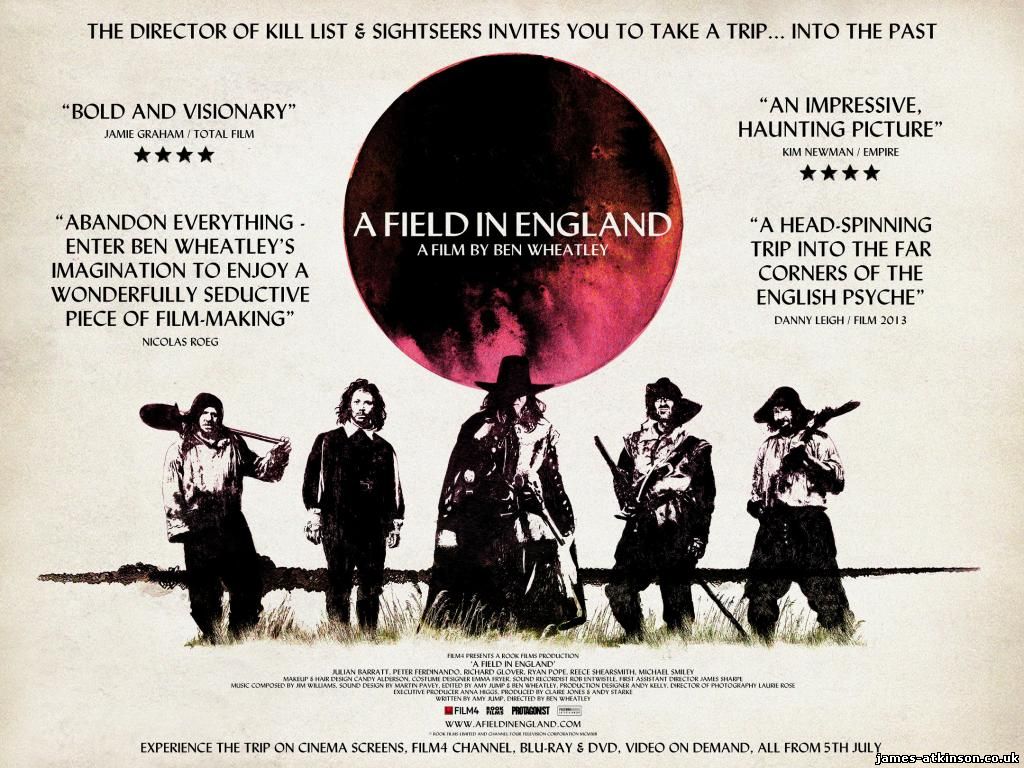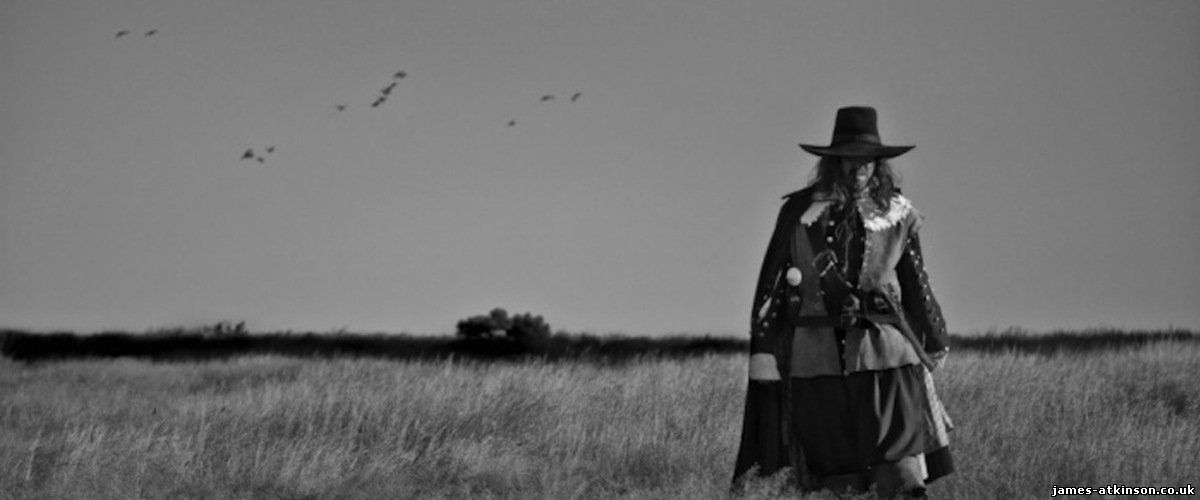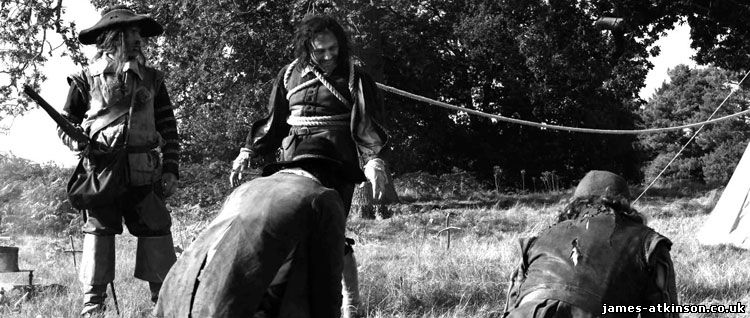1:45 AM Ben Wheatley’s film A Field in England is an excellent, if unsettling, experience |
|
Ben Wheatley is a British filmmaker that has a tradition of pushing boundaries. His previous direction credits include Down Terrace, Kill List and Sightseers. His fourth film is A Field in England, a true departure from the standards of cinema today. Ben does not shy away from violence. Kill List and Sightseers having some ultra violent themes. He also shows his commercial credentials with forays into TV, recently filming two episodes of Dr Who for the BBC. They were both part of series 8 with the debut of Peter Capaldi in ‘Deep Breath’ and the second episode ‘Into the Dalek’. A Field in England is a film hard to categorise. It is dark and surreal with influences from British cinema such as A Witchfinder General and The Wickerman, TV drama such as Culloden and psychedelic films from other countries such as The Trip and films by Alejandro Jodorowsky; particularly El Topo. I also see David Lynch running through the cutting and sound design. You can even say William S Burroughs could have written parts of the story! The film is entirely digital monochrome and based in the West Country field. It is one of the first films to be simultaneously released at the cinema, Blu-ray/DVD, video on demand and (one of the funding partners) Film4. It has it’s own production site with intricate details on the development of the film. Ben Wheatley certainly created a buzz around the release. This is from a production that cost a mere £300 thousand and took 12 days to film. 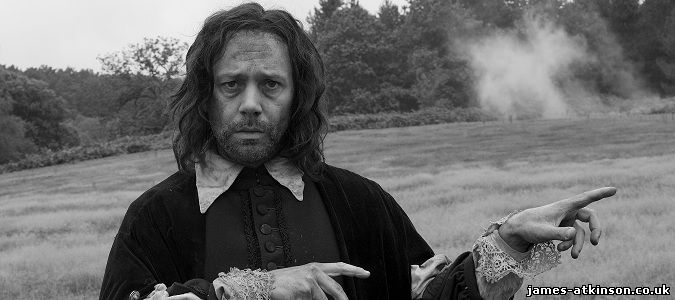 I have to say that I love this movie; in fact it has stayed with me more than any other in the past. There are some extraordinarily memorable moments that the director takes us on. It is set during the English Civil War where a group of mismatched deserters go in search of an elusive alehouse. The action takes place when the group meet while going from the field of war, over a hedge, into the field where all the action takes place. That action is trippy, dark and quite nasty. There are six main characters in the whole piece. One of the main ones is the cowardly Scholar named Whitehead, played by the League of Gentleman’s Reece Sheersmith. He is teamed up with a group that he expresses is ‘an alchemy of circumstance’ where you see his frustrations gradually become a focus. The submissive nature is seen best when the group of deserters meets the sinister necromancer O’Neil, played with grit by Wheatley stalwart Michael Smiley. The other deserters conform to the menace of O’Neil due to the necromancer’s partner in crime Cutler (played by Ryan Pope) as he fed them magic mushroom soup. This is where the film becomes visceral and disturbing. The other participants are two soldiers who form a connection, Jacob and ‘friend’, played by Peter Ferdinando and Richard Glover respectively. 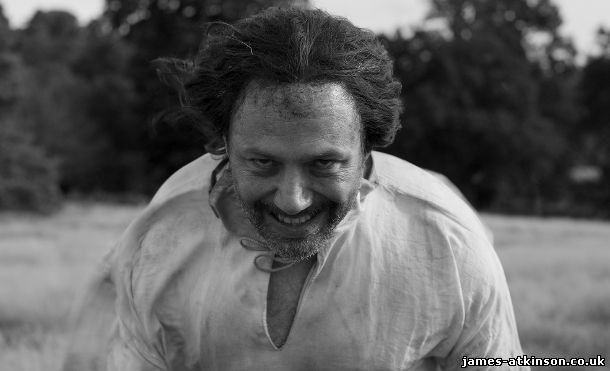 Whitehead is the only one to not partake in the soup and so is not affected by the experience the others are going through. This leads to some amusing scenes but, unlike other Ben Wheatley films, the predominant theme through the film is mostly serious. The sinister tension builds as the men are forced by O’Neil to find hidden treasure. He uses Whitehead as a conduit to find the spot he believes, through some unknown power, that Whitehead may lead him too. There are some bizarre moments but the strangest occurs when Whitehead enters O’Neil’s tent, followed by blood curdling screams and then emerges on the end of a rope in a grimacing trance. I cannot explain the affect this has on the viewer but the slow motion, uncut sequence is chilling. The violent uprising of that period in history adds to the hysteria as the men’s fears are played against them. The non-existence of God, fear of death and the class divides create conflict and the drugs produce a visual feast that disorientates us to become part of these emotions. Another remarkable device employed are still tableaux’s, scenes where the actors are stationary and portraying classical paintings of the period. These are both enigmatic and unnerving. Together with the excellent score by composer Jim William it gives a dimension to the images that transports us far away. The music has traditional sounds of the era but the soundscape alters as the characters minds are affected: a clever and subtle effect that adds flavour to an already rich filmic tapestry. Whitehead (Reece Shearsmith) emerges from an unknown experience One of the plot points, although ambiguous (like quite a bit of the story), is the influence of European folklore. This occurs where we see the mushrooms and particularly the dragging out of O’Neil via a rope and four men. This almost certainly will relate to the tales of mushroom circles and what was held within them. Mushrooms can naturally grow in a circle of variable size and it is this that gave rise to the stories. These can be anything from fairies or elves dancing to entice passers by or that the ring would be a gateway to an area where time and space are different. One that enters such a place will perceive events passing in an alternative timeline. You could be in the circle for weeks but when emerging it could in reality be only minutes. This ‘lore’ also states a man can be dragged out by a rope and four men into the real dimension if he is stuck within the space and time distortion. Of course, it is no surprise that the same mushroom rings can contain poisonous and other toxic species. One of the main set that Ben Wheatley and Amy Jump may be indicating are the types that change people’s perception, mood and behavior. These are the ‘magic’ ones that produce hallucinations, most notably psilocybin mushrooms. These have been used for thousands of years deforming a person’s smell, sight, touch and the ability to judge the passage of time.
The word hallucinate was coined in the early 17th century, and first meant “deceive”, from the Latin alucinari, which in turn means “to wander, dream or ramble in thought”. From the middle of the 17th century, around the time of the English Civil Wars, the word hallucinate began to take on the sense of “to have illusions” – From the Film4 website Masterclass, a link to which is at the end of this blog.
Director/editor Ben Wheatley 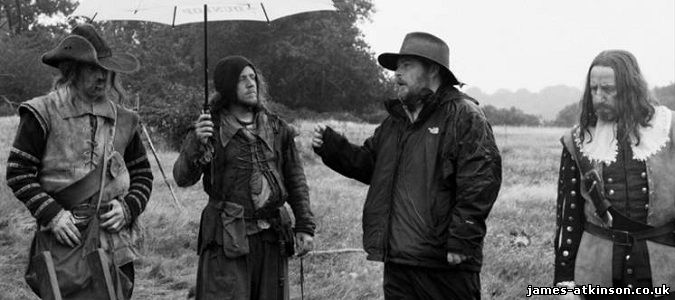 Ben Wheatley directing A Field in England |
|
|
| Total comments: 6 | |
|
| |
